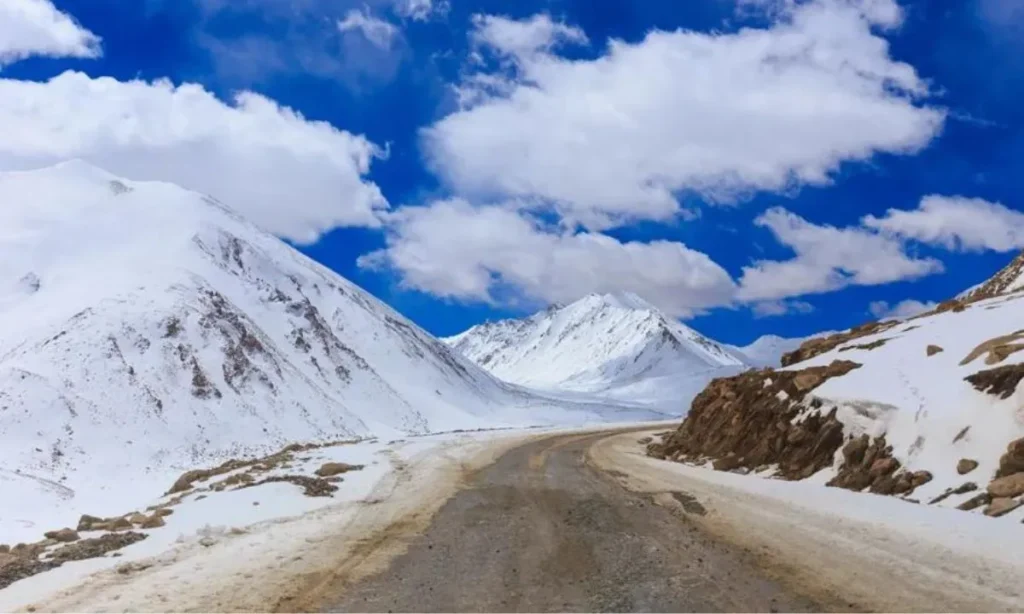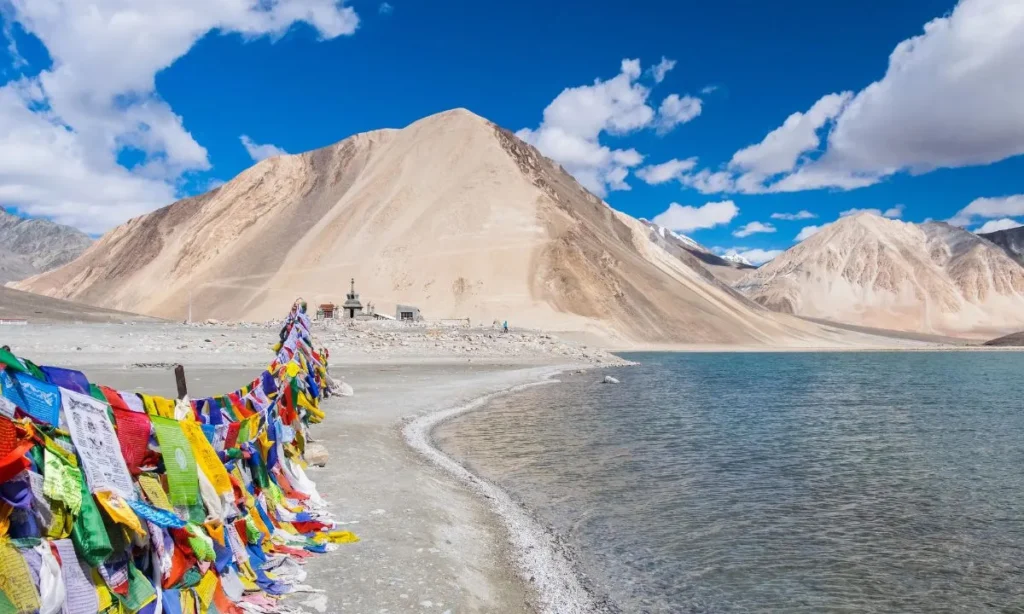“Is it worth going to Leh Ladakh in winter?”
“I’ve heard the roads are closed in the monsoon. Is that true?”
“When’s the best time to visit Leh Ladakh for someone who doesn’t like crowds?”
These are the kinds of questions I hear all the time from people planning their first trip to Leh Ladakh. And I get it. Planning a trip to a place as wild and wonderful as Leh Ladakh isn’t like booking a weekend getaway to the beach. There’s a lot more to consider, and the timing can make or break your adventure.
You want the jaw-dropping scenery, the peaceful vibes, and maybe even a dash of adrenaline—but you don’t want to be stuck in a snowstorm, or worse, find out that the road to that dream destination is closed.
So, let’s dive into it. Here’s everything you need to know about the best time to visit Leh Ladakh, broken down in a way that even your grandma could understand (if she’s into that sort of thing).
When Is the Best Time to Visit Leh Ladakh? A Month-by-Month Breakdown
Overview:
- May to September is the best time to visit Leh Ladakh if you want the perfect mix of accessibility, weather, and activities.
- January and February are for adventurous souls who want to experience the thrill of Leh Ladakh in the dead of winter.
- March to April offers a quieter experience with blooming landscapes, perfect for those who want to avoid the crowds.
- July and August bring a touch of green to the mountains and a few unpredictable surprises.
- September is the photographer’s dream, with clear skies and fewer tourists.
- October to December offers peace, solitude, and the first snowfalls of the season.
1. January to February: For the Daredevils

Imagine this: you’re walking on a frozen river, the air is so crisp it bites your nose, and all you can hear is the crunch of your boots on the ice. Welcome to the Chadar Trek in January.
These months are cold—like, really cold. We’re talking temperatures that can dip to -20°C. But if you’re someone who loves a challenge and doesn’t mind bundling up like the Michelin Man, January and February could be your golden ticket.
What to Expect:
- Snow Everywhere: The landscape turns into a white wonderland.
- Less Crowded: You’ll have the place almost to yourself.
- Closed Roads: Many passes and roads are shut down due to heavy snow.
Who It’s For:
The hardcore adventurers who want to do something few others have dared.
2. March to April: The Calm Before the Storm

Now, picture this: It’s early April, and you’re walking through an orchard of apricot trees in full bloom. The snow is melting, and the rivers are starting to flow again. This is when Leh Ladakh begins to wake up from its winter slumber.
The temperatures are still cool, hovering between -5°C to 10°C, but it’s more manageable. Plus, you’ll get to see the region in a way that most tourists miss out on—quiet, peaceful, and just starting to bloom.
What to Expect:
- Budding Spring: Apricot blossoms everywhere.
- Fewer Tourists: You won’t have to elbow your way through the crowds.
- Limited Access: Some roads might still be closed, but you can still explore plenty of places.
Who It’s For:
Travelers looking for tranquillity and don’t mind a bit of chill in the air.
3. May to June: The Sweet Spot

Okay, now we’re talking. May and June are when things start to get busy—and for a good reason. The temperatures are comfortable 15°C to 25°C, the snow has melted, and all the passes are open. You can finally reach those postcard-perfect spots like Pangong Lake and Nubra Valley without worrying about snow blocking your way.
Plus, if you time it right, you can catch the Hemis Festival in June, where the locals pull out all the stops with colourful costumes, music, and dance.
What to Expect:
- Perfect Weather: Warm days, cool nights, and clear skies.
- Everything’s Open: All roads and passes are accessible.
- More Tourists: This is peak season, so expect to share the experience with others.
Who It’s For:
Anyone who wants to see Leh Ladakh at its most accessible and vibrant.
Read More Article: Best Time to Visit Jibhi, Himachal Pradesh: A Month-by-Month Guide
4. July to August: The Unexpected Green

Now, here’s something you might not expect: Leh Ladakh actually gets a bit of rain. The monsoon hits Ladakh in July and August, but it’s nothing like the heavy downpours you get in other parts of India. Instead, it turns the barren mountains into a surprising splash of green.
This is also the time for some unique festivals like the Dakthok Tsechu, where you can dive deep into local culture.
What to Expect:
- Lush Landscapes: The mountains get a rare touch of green.
- Fewer Tourists: Many are scared off by the thought of rain.
- Possible Road Issues: Some roads might get slippery or blocked by landslides, but nothing too crazy.
Who It’s For:
Travellers who like a bit of greenery with their mountains and don’t mind a little unpredictability.
5. September: The Photographer’s Dream

Alright, let’s say you’ve got a camera, and you’re looking to capture Leh Ladakh at its absolute best. September is your month. The skies are clear, the weather is cool but not cold, and the tourist crowds have started to thin out.
This is when the region looks like it’s straight out of a National Geographic spread. Plus, you’ll get to experience the Ladakh Harvest Festival, which is as picturesque as it gets.
What to Expect:
- Clear Skies: Perfect for those panoramic shots.
- Comfortable Weather: Warm days, chilly nights—just right.
- Fewer Crowds: Most of the summer tourists have gone home.
Who It’s For:
Anyone with a camera and a love for stunning landscapes.
6. October to December: The Quiet Escape

Finally, we come to the end of the year. October starts to bring the chill back, and by December, the snow is making its grand return. But here’s the thing: Leh Ladakh in these months is peaceful—almost meditative.
Imagine sitting by a quiet lake, the first snowflakes of the season falling around you. Or sipping hot butter tea in a local guesthouse while the wind howls outside. It’s not for everyone, but if you’re looking for a place to truly disconnect, this is it.
What to Expect:
- First Snowfalls: The landscape starts turning white again.
- Peace and Quiet: The tourist rush is over.
- Limited Access: Some roads and passes will start closing again.
Who It’s For:
Travelers who want to experience Leh Ladakh’s tranquillity and don’t mind the cold.
Read More Article: Leh Ladakh Tourist Places: Explore the Most Stunning Tourist Places
Month-by-Month Climate Overview
To help you decide the best time to visit Leh Ladakh, here’s a quick overview of the climate throughout the year:
| Month | Average Temperature (°C) | Weather | Tourist Activity |
|---|---|---|---|
| January | -20°C to 2°C | Extremely cold, heavy snowfall | Minimal, ideal for winter trekking (Chadar Trek) |
| February | -15°C to 5°C | Freezing temperatures, snow-covered | Minimal, perfect for adventure seekers |
| March | -5°C to 10°C | Cold, snow melting, early spring | Quiet, blooming apricot trees |
| April | 0°C to 15°C | Cold mornings, warmer days | Few tourists, semi-frozen lakes, blossoming landscape |
| May | 15°C to 20°C | Mild and pleasant, snow mostly melted | Start of peak season, all roads open |
| June | 15°C to 25°C | Warm and sunny, clear skies | High tourist activity, ideal for sightseeing |
| July | 15°C to 20°C | Cool, occasional rain, greenery | Moderate crowds, scenic landscapes, minor road disruptions |
| August | 15°C to 20°C | Cool, occasional showers, vibrant scenery | Fewer tourists, some road closures possible |
| September | 10°C to 20°C | Clear and pleasant, cooler nights | Perfect for photography, harvest season |
| October | -2°C to 15°C | Chilly, the first snowfall in higher regions | Less crowded, beautiful fall colours |
| November | -10°C to 5°C | Cold, increasing snowfall, winter begins | Minimal tourists, peaceful atmosphere |
| December | -15°C to 3°C | Extremely cold, heavy snowfall | Very few tourists, ideal for solitude seekers |
Read More Article: Best Time for Ladakh Bike Trip Guide to an Epic Adventure
FAQs
Mostly yes, but keep an eye on the weather. Some roads can be tricky due to landslides.
January is the coldest, with temperatures plunging as low as -20°C.
Absolutely, but be prepared for extreme cold and limited access to certain areas.
